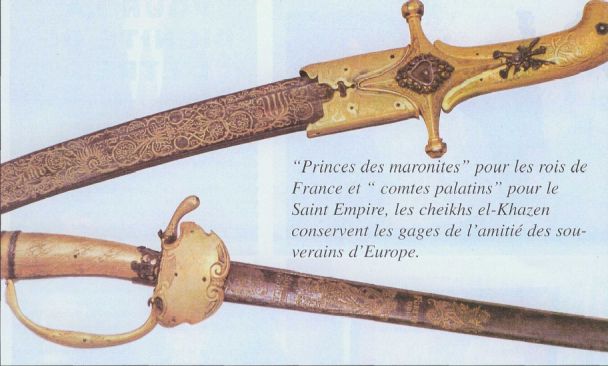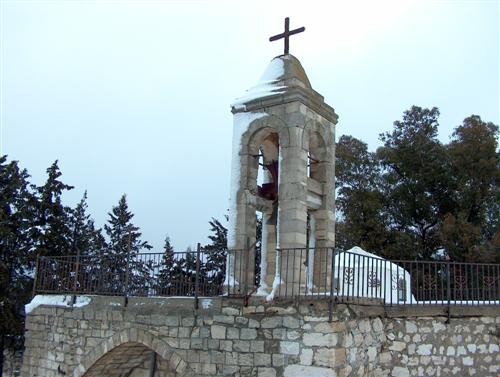By Jessy Bains, Editor at LinkedIn News –– Bitcoin continues to show remarkable resiliency in spite of numerous flops and failures in …

By Jenny Gustafsson in Beirut - The guardian -- ‘Reformists’ take on the corrupt ‘elite' in a game that recreates the golden age – and invites players to imagine a different history
In a dimly lit room in Beirut, five friends sit around a table with a map of Lebanon in the middle. They each have a handful of markers and a card placed face-down in front of them.
The card, which has a drawing of a vintage chair on the back – symbolising power – determines the entire game. It assigns you the secret role of either “reformist” or “corrupt elite”. “It is just like in real life, you don’t know who is corrupt and who is not,” says Jean-Michel Chemaly, one of the developers of the board game. Machrou3 Ra2is: A Game of Corruption was released in December, giving people a chance to play the political game of Lebanon. The task is to control districts and, ultimately, win the presidential election – either through bluff or fair play.<p>
Chemaly says the idea came during the protests in 2019, when large numbers of Lebanese came out on the streets. A friend, Benoit Khayat, suggested that they create a game based on the politicians’ actions. “Every single society has people abusing power for their own benefit. We wanted to speak about it from a Lebanese perspective,” Chemaly says. The issues that people mobilised around in 2019 – corruption, accountability, justice – have become even more pressing. Lebanon has sunk deep into a financial crisis, with one of the highest levels of inflation in the world and a 98% depreciation of its currency. A fledgling anti-corruption movement has lost momentum. Millions have lost money, and are unable to access what little is left due to bank limits on withdrawals. As a consequence, 80% of the population face poverty, the UN estimates.
By Saundra Latham, Editor at LinkedIn News — The rise of chatbots has spurred concern among educators worried that students will pass …

By Nahia Houssari -- arabnews.com -- BEIRUT: As the women gather around the table to make maamoul cookies for Easter, they all feel that this year’s celebrations will be different, and probably for the worse. Hala Dagher, speaking on behalf of her sisters, said: “This year we decided to split the cost of maamoul and only make half of the usual quantity. “Maamoul cookies represent blessings and we cannot celebrate Easter without them, even in a small amount.”
The Lebanese are known for their attachment to family and traditions, especially on special occasions and holidays. One of the country’s traditions, especially at Easter, is that women gather a few days before the big weekend to make maamoul cookies filled with walnuts, pistachios, or dates. The cookies are among the most famous Lebanese sweets prepared for Easter. The dough is made of semolina, sugar, butter, rose water and blossom water, and can be covered in icing sugar. The dough is traditionally made on Good Friday and the cookies baked the following day. However, austerity has hit many Lebanese homes as all ingredients are priced in US dollars. Very few people have decorated for Easter this year, and many will not be buying eggs to paint as a symbol of resurrection and life. Those who buy chocolate eggs are rare as the treats have become too expensive.
Khazen History


Historical Feature:
Churches and Monasteries of the Khazen family

St. Anthony of Padua Church in Ballouneh
Mar Abda Church in Bakaatit Kanaan
Saint Michael Church in Bkaatouta
Saint Therese Church in Qolayaat
Saint Simeon Stylites (مار سمعان العامودي) Church In Ajaltoun
Virgin Mary Church (سيدة المعونات) in Sheilé
Assumption of Mary Church in Ballouneh
1 - The sword of the Maronite Prince
2 - LES KHAZEN CONSULS DE FRANCE
3 - LES MARONITES & LES KHAZEN
4 - LES MAAN & LES KHAZEN
5 - ORIGINE DE LA FAMILLE
Population Movements to Keserwan - The Khazens and The Maans
ما جاء عن الثورة في المقاطعة الكسروانية
ثورة أهالي كسروان على المشايخ الخوازنة وأسبابها
Origins of the "Prince of Maronite" Title
Growing diversity: the Khazin sheiks and the clergy in the first decades of the 18th century
Historical Members:
Barbar Beik El Khazen [English]
Patriach Toubia Kaiss El Khazen(Biography & Life Part1 Part2) (Arabic)
Patriach Youssef Dargham El Khazen (Cont'd)
Cheikh Bishara Jafal El Khazen
Patriarch Youssef Raji El Khazen
The Martyrs Cheikh Philippe & Cheikh Farid El Khazen
Cheikh Nawfal El Khazen (Consul De France)
Cheikh Hossun El Khazen (Consul De France)
Cheikh Abou-Nawfal El Khazen (Consul De France)
Cheikh Francis Abee Nader & his son Yousef
Cheikh Abou-Kanso El Khazen (Consul De France)
Cheikh Abou Nader El Khazen
Cheikh Chafic El Khazen
Cheikh Keserwan El Khazen
Cheikh Serhal El Khazen [English]
Cheikh Rafiq El Khazen [English]
Cheikh Hanna El Khazen
Cheikha Arzi El Khazen
Marie El Khazen